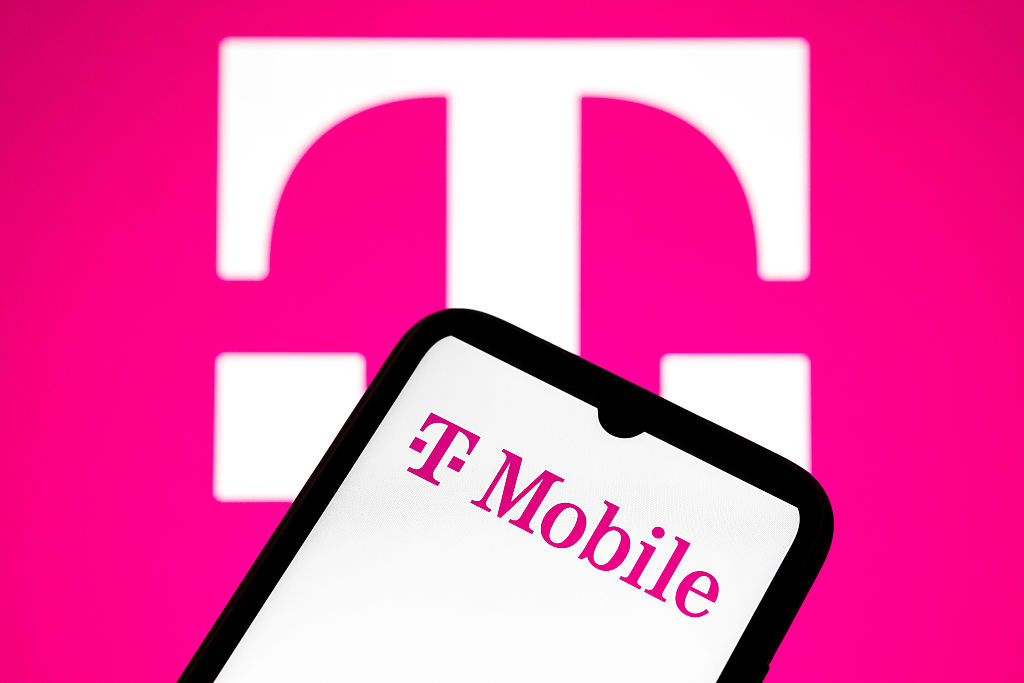Audit Alert: Why Business Owners Shouldn’t Be Spooked by Captive Insurance
You may have heard that this type of self-insurance is ripe for tax abuse, but when used correctly, it’s completely legit. So don’t shy away unnecessarily.


Now that tax season is over, hand-wringing season has begun as many business owners wait and worry about whether an audit may be in their future.
For businesses that have utilized a form of self-insurance known as captive insurance, there might be added nerves, especially with some commentators making misleading, blanket statements that captives are essentially nothing more than abusive tax shelters perpetrated only by bad actors.
The truth is captive insurance has been a tried, true and perfectly legal form of self-insurance for over three decades, created by Congress in the 1980s, and expanded and encouraged by Congress as recently as the Obama administration.
From just $107.88 $24.99 for Kiplinger Personal Finance
Become a smarter, better informed investor. Subscribe from just $107.88 $24.99, plus get up to 4 Special Issues

Sign up for Kiplinger’s Free Newsletters
Profit and prosper with the best of expert advice on investing, taxes, retirement, personal finance and more - straight to your e-mail.
Profit and prosper with the best of expert advice - straight to your e-mail.
Section 831(b) allows businesses to create their own insurance entities, known as captives, to help them mitigate risks not typically covered by commercial insurance. Businesses can also receive a tax benefit for the premiums they pay to captives.
In many cases, this is a win-win, especially for small businesses that are exposed to risks not normally covered by commercial insurance and that don’t have the resources of big corporations to mitigate those risks. In fact, many business owners have come painfully face-to-face with the limits of their traditional business insurance, with their claims for losses related to the pandemic often being declined because a virus is not a covered risk.
Of course, captives also come with a potential tax benefit, and as with anything good when it comes to taxes, there are those who will try to take it too far. But that shouldn’t scare businesses away from using a legal form of self-insurance that could both help to mitigate risk and net tax breaks.
The job of a good tax adviser is to help clients keep more of their money in their pockets, within the letter of the law. After all, that’s money that could strengthen their retirement accounts or be invested to grow their business. But of course, there needs to be an emphasis on following the letter of the law. It’s not a free-for-all.
Here’s how to use captives without getting spooked:
Use a third party to assess risk
If you’re a dentist, paying premiums to cover the risk of a terrorist attack and then claiming those premiums as a tax break doesn’t make a lot of sense. Yet, there are those who have tried it. However, if you are a business owner in a highly regulated industry, you can insure against an adverse effect of a change in the law. Or if you are in a business that requires a high level of reputational trust, you can insure against an attack in social media that results in a loss of business.
With any form of self-insurance, it all starts with making sure the premiums you pay match legitimate business risks, both in terms of what those risks are and how much you’re paying in premiums.
The best way to show the IRS that your captive payments represent legitimate risk mitigation is to have a third party come in and provide an assessment.
Where bad actors most often exploit captives is by hitting the max premium payments year in and year out, currently at $2.3 million, and then claiming it all come tax time. They do so by creating phony risks, like the terrorist attack example above.
One rule of thumb: If your losses are, year after year, less than 20% of your premiums, you might be insuring phony or non-existent risks.
With a third-party assessment, you’ll know which risks are real, and how much you should actually be paying in premiums to cover them. You very well might still hit that maximum, but you’d do so with legitimacy.
Perform your own due diligence on captive vendors
You wouldn’t sign on with a vendor without performing due diligence, so why would you do so with a captive manager?
As someone who has utilized self-insurance for my own business, I can tell you that I sorted through dozens of vendors before landing on the one I use today. There are certainly some promoters of captives that are bad actors, who inflate risks and even seek to backdate licenses and behave in other ways that are fraudulent.
But on the other hand, don’t listen to blanket misstatements made without evidence about the whole captive insurance risk management sector, or any individual state insurance department or regulator. Maybe you’ll find that your best option comes from, say, a vendor working out of Puerto Rico, a domicile that carries the highest rating with AM Best for its country’s risk rating. Or maybe your best option will be Bermuda, Vermont or one of other domiciles that have a specialty market, or a focus on medical, financial or other markets.
Talk to your advisers and your team and look at potential vendors with the same critical lens you would with anything that could have major tax implications.
Utilize other forms of self-insurance
When you’ve checked your books, talked to an adviser, performed due diligence and received your assessment, it’s very possible that the 831(b) captive option just isn’t right for your business. But that doesn’t mean you can’t still self-insure and potentially still receive some tax benefits in the process.
After captives were codified in the ’80s, many other private and self-insurance options followed, like risk retention and risk purchasing groups, and now there are newer, innovative options like catastrophe bonds.
The bottom line is that you have every right to mitigate whatever risks exist for your business. And if 831(b) or other self-insurance is the right option for you, you should rest assured that you can continue to use it with confidence.
Profit and prosper with the best of Kiplinger's advice on investing, taxes, retirement, personal finance and much more. Delivered daily. Enter your email in the box and click Sign Me Up.

Bruce Willey has been working with small to midsize businesses across the country for more than a decade, helping them navigate business and tax law in a variety of situations. His services include assisting with business start-ups, operations, growth, asset protection, exit planning and estate planning.
-
 The Retirement Donor's Checklist: Key Deadlines by Gift Type
The Retirement Donor's Checklist: Key Deadlines by Gift TypeRetirees have some charitable contribution options that can help avoid spikes in income from RMDS and capital gains.
-
 Cooler Inflation Supports a Relief Rally: Stock Market Today
Cooler Inflation Supports a Relief Rally: Stock Market TodayInvestors, traders and speculators welcome much-better-than-hoped-for core CPI data on top of optimism-renewing AI earnings.
-
 Are T-Mobile's Prepaid Perks a Home Run or a Strikeout?
Are T-Mobile's Prepaid Perks a Home Run or a Strikeout?T-Mobile's prepaid lineup promises MLB.TV, T-Mobile Tuesdays and hotspot data. But do the perks make it worth switching?
-
 5 Smart Things to Do With Your Year-End Bonus, From a Financial Professional
5 Smart Things to Do With Your Year-End Bonus, From a Financial ProfessionalAfter you indulge your urge to splurge on a treat, consider doing adult things with the extra cash, like paying down debt, but also setting up a "fun fund."
-
 Are You a Gen X Investor? Here's How You Can Protect Your Portfolio From an AI Bubble
Are You a Gen X Investor? Here's How You Can Protect Your Portfolio From an AI BubbleAmid talk of an AI bubble, what's the best course of action for investors in their 50s and 60s, whose retirement savings are at risk from major market declines?
-
 Hey, Retirees: Put Your Charitable Gifts in a Donor-Advised Fund (and Enjoy Your Tax Break)
Hey, Retirees: Put Your Charitable Gifts in a Donor-Advised Fund (and Enjoy Your Tax Break)A donor-advised fund is a simple (really!), tax-smart strategy that lets you contribute a large, tax-deductible gift now and then distribute grants over time.
-
 If You're a U.S. Retiree Living in Portugal, Your Tax Plan Needs a Post-NHR Strategy ASAP
If You're a U.S. Retiree Living in Portugal, Your Tax Plan Needs a Post-NHR Strategy ASAPWhen your 10-year Non-Habitual Resident tax break ends, you could see your tax rate soar. Take steps to plan for this change well before the NHR window closes.
-
 Your Year-End Tax and Estate Planning Review Just Got Urgent
Your Year-End Tax and Estate Planning Review Just Got UrgentChanging tax rules and falling interest rates mean financial planning is more important than ever as 2025 ends. There's still time to make these five key moves.
-
 What Makes This Business So Successful? We Find Out From the Founder's Kids
What Makes This Business So Successful? We Find Out From the Founder's KidsThe children of Morgan Clayton share how their father's wisdom, life experience and caring nature have turned their family business into a respected powerhouse.
-
 Past Performance Is Not Indicative of Your Financial Adviser's Expertise
Past Performance Is Not Indicative of Your Financial Adviser's ExpertiseMany people find a financial adviser by searching online or asking for referrals from friends or family. This can actually end up costing you big-time.
-
 I'm a Financial Planner: If You're Not Doing Roth Conversions, You Need to Read This
I'm a Financial Planner: If You're Not Doing Roth Conversions, You Need to Read ThisRoth conversions and other Roth strategies can be complex, but don't dismiss these tax planning tools outright. They could really work for you and your heirs.